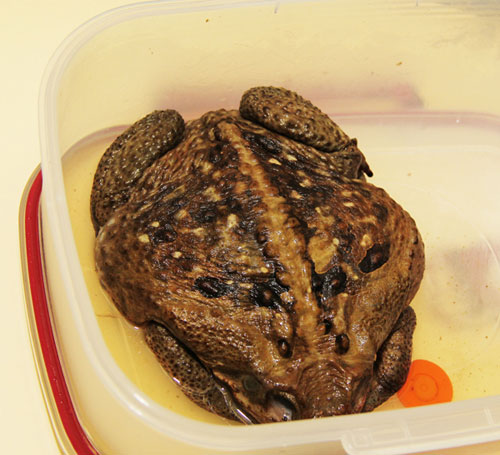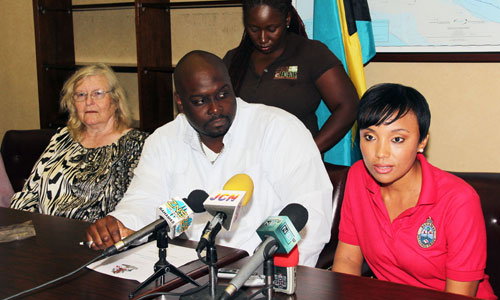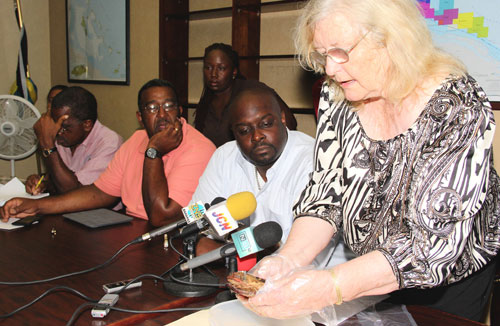|
From:TheBahamasWeekly.com Bahamas Information Services Updates
Nassau, The Bahamas – The public is advised to be on the alert for the cane toad, an invasive species capable of killing small pets and causing severe skin reactions in humans that has been discovered in the Lyford Cay area. Environment and Housing Minister the Hon. Kenred Dorsett announced Friday, September 6 that New Providence “may have an introduced invasive species”. We are unable to definitively say how long they have been here. Based solely on anecdotal reports some residents are claiming to have first seen them since December 2012. However, there is one unconfirmed report dating back almost four years ago,” said Minister Dorsett. The Bahamas National Trust was first alerted to the presence of the cane toad on August 8 by a resident of Lyford Cay. The announcement was made at a press briefing held at the Ministry of the Environment and Housing. Among those in attendance was Camille Johnson Permanent Secretary and representatives from the Nature Conservancy, Bahamas National Trust and the Department of Agriculture. Despite unconfirmed reports of possible sightings in Charlotteville, Adelaide and St. Alban’s Drive, Minister Dorsett said it is believed the toads are confined to the Lyford Cay area.
Relevant government agencies, nongovernmental organisations and other stakeholders including residents and staff of the Lyford Cay community met on August 26 to develop strategies and coordinate national efforts regarding the cane toad. Minister Dorsett explained that the Government is taking the following measures to address the matter: 1. Public education and awareness; 2. Coordination of safe handling and disposal of the cane toad; 3. Establishment of a task force to assess, educate and develop a plan for immediate containment and ultimate eradication of the cane toad. Unlike the native frog that possesses smooth, moist skin and can be found in trees, windows and walls, the cane toad has bumpy, warty skin and will not be found on walls or in trees.
The public is advised to take the following action if a cane toad is seen: 1. Report the location of the sighting to the Bahamas National Trust, the Department of Agriculture and the Best Commission (322-4546); 2. Take a photograph of the cane toad and email it to canetoad@bnt.bs or at 393-1317; 3. If you live in the Lyford Cay area inform the security at Lyford Cay. The public is advised not to do the following if a cane toad is seen: 1. Take the cane toad from the area where sighted as you will be actively assisting in the spread of this invasive species; 2. Attempt to sell to a pet shop; 3. Try to collect a pair — male and female. Minister Dorsett advised the pubic to seek medical attention if toxins from the cane toad get on an open wound, in the eyes or on the skin, With respect to pets, he said to look out for drooling, head shaking, crying, loss of coordination and convulsions in more serious cases.
|


